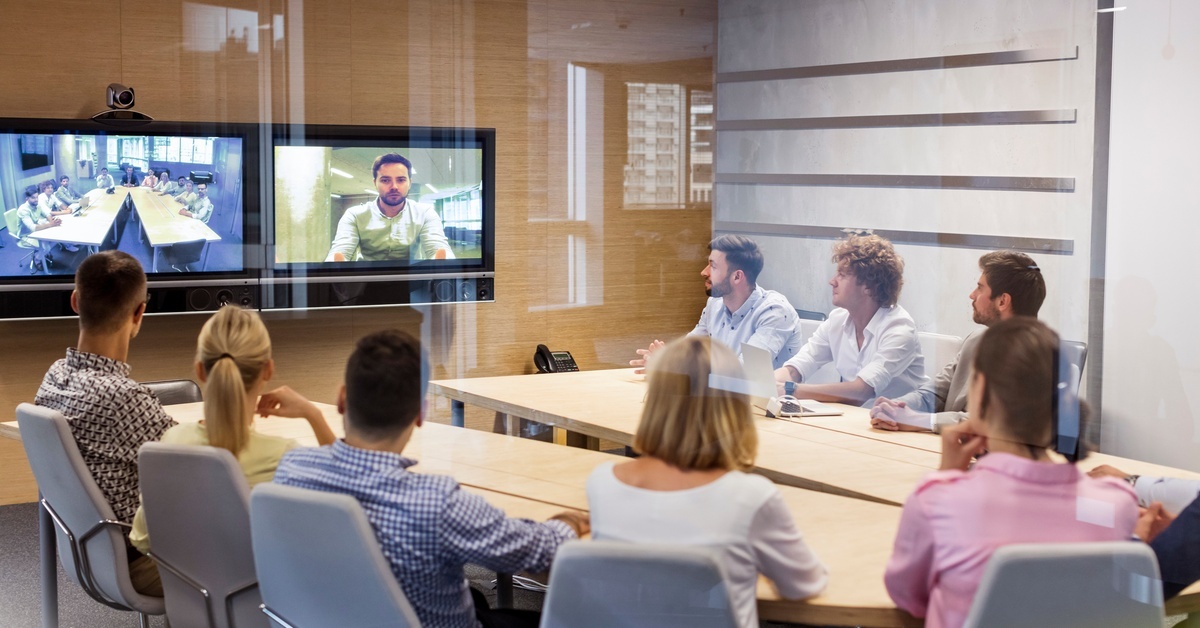
You walk into a conference room, ready to present your latest project to potential clients. You connect your laptop to the display, but nothing happens. After ten minutes of troubleshooting, changing cables, adjusting settings, and frantically calling IT, you finally get your presentation working—only to discover the audio isn't syncing properly.
This scenario plays out in businesses across the globe every single day, costing companies time, money, and professional credibility. The solution isn't buying shiny new gear or hiring more tech support staff. The answer lies in something far more fundamental: audio-visual standardization.
AV standardization transforms chaotic, unpredictable technology environments into streamlined, reliable systems that support your business goals rather than hinder them. When you implement consistent AV standards across your organization, you create an environment where technology works seamlessly, employees feel confident using the equipment, and your business can focus on what matters most: delivering results.
What Is AV Standardization?

AV standardization means establishing consistent hardware, software, and operational procedures across all audiovisual systems within your organization. Instead of having different brands, interfaces, and connection methods in every meeting room, you create unified systems that operate identically regardless of location.
This approach extends beyond simply buying the same brand of equipment for every room. True AV standardization encompasses everything from the physical hardware and cable types to the user interfaces and control systems. When someone walks into any conference room in your building—or any office in your company—they encounter the same connection ports, the same control panels, and the same operational procedures.
Standardization also includes establishing clear protocols for how you interact with your equipment. This means creating consistent workflows for connecting devices, adjusting volume levels, switching between presentation sources, and troubleshooting basic issues. When these processes remain identical across all spaces, users develop muscle memory and confidence that translates to smoother meetings and presentations.
Cost Savings Through Strategic Standardization
Implementing AV standardization delivers immediate and long-term financial benefits that extend far beyond the initial investment. When you purchase equipment in larger quantities from fewer vendors, the price becomes much more reasonable. Buying in bulk is always cheaper, and many manufacturers offer additional incentives for customers willing to commit to them.
Replacement parts become more economical when they work across your entire infrastructure. A single spare projector lamp type, universal remote control, or standard cable assembly can serve multiple rooms rather than requiring room-specific inventory. This approach reduces both storage requirements and capital tied up in spare parts inventory.
Training costs also decrease significantly as employees only need to learn one set of procedures and interfaces. New hires can become proficient quickly, and existing staff spend less time relearning systems when they move between different spaces. This efficiency translates directly into productivity gains and reduced frustration across your workforce.
Improved Efficiency Across Your Organization
Standardized AV systems eliminate the learning curve that typically accompanies technology use in different environments. When employees know exactly what to expect in every meeting room, they can focus on their presentations and discussions rather than wrestling with unfamiliar equipment. This consistency reduces meeting delays and allows sessions to start promptly and proceed smoothly.
Technical support also becomes more efficient when your IT team works with familiar systems. Troubleshooting follows predictable patterns, and solutions that work in one room apply to similar issues throughout your facility. Support staff can often resolve problems remotely because they understand exactly how each system is configured and connected.
System integration improves when all components follow the same standards and protocols. Your video conferencing system communicates seamlessly with your display technology, and your audio processing equipment interfaces properly with your control systems. This harmony eliminates compatibility issues that can disrupt important meetings or presentations.
Scheduling and room management become more flexible when every space offers identical capabilities. Meeting organizers don't need to book specific rooms based on technical requirements because all rooms support the same functions. This flexibility optimizes space utilization and accommodates last-minute changes without technical complications.
Enhanced User Experience That Builds Confidence

Consistent AV systems create predictable user experiences that build confidence and reduce anxiety around technology use. When employees know they can successfully operate equipment in any room, they approach presentations and meetings with greater assurance. This confidence translates into more effective communication and better business outcomes.
User interfaces remain identical across all systems, eliminating the confusion that comes from learning different control methods for similar functions. Whether someone needs to adjust volume, switch input sources, or initiate screen sharing, the process remains exactly the same regardless of location. This consistency reduces user error and minimizes technical disruptions during important meetings.
Remote participants also benefit from standardized systems because the quality and functionality of video conferences remain consistent across all your meeting spaces. They know what to expect in terms of audio quality, video clarity, and interactive capabilities, leading to more effective remote collaboration and stronger relationships with external partners and clients.
Scalability That Supports Business Growth
Standardized systems scale more effectively as your business expands. When you add new locations or meeting spaces, you can replicate your proven AV infrastructure without redesigning systems or retraining users. This consistency maintains your operational efficiency even as your organization grows.
Integration with new technologies becomes easier when you have established standards and protocols. Your standardized infrastructure provides a solid foundation for adopting emerging technologies without disrupting existing operations or requiring comprehensive system overhauls.
The ability to work effectively in any location also improves staff mobility. This flexibility supports remote work arrangements, multi-site collaboration, and organizational restructuring without creating technical barriers to productivity.
Consistent Performance That Builds Trust
Standardized AV systems are important because they deliver predictable performance levels that build trust among users and stakeholders. Meeting organizers can confidently plan presentations knowing that the technology will work reliably, and participants can focus on content rather than technical difficulties.
Quality standards remain consistent across all spaces when you use identical equipment and configurations. This consistency ensures that important presentations and communications maintain professional standards regardless of which room or location hosts them.
Performance monitoring becomes more effective when you can compare metrics across identical systems. Unusual performance patterns become more apparent, and you can identify potential issues before they impact users or meetings.
System reliability improves when all components are proven to work together effectively. The compatibility issues that plague mixed environments disappear, leading to more stable operations and fewer technical interruptions.
Building Your Technology Foundation for Success
AV standardization represents more than a technology strategy—it creates the foundation for effective communication and collaboration that drives business success. When your AV systems work reliably and consistently, your teams can focus on innovation, relationship building, and achieving strategic objectives rather than managing technical challenges.
Simplify your audio-visual solutions with AV management services from Continuant. See how our expert team can help you maintain a consistent, flexible, and efficient system when you partner with us today.
%20Success%20Stories/3M%20-%20main.jpg)
%20Success%20Stories/Baylor-CS-Image-2.jpg)





